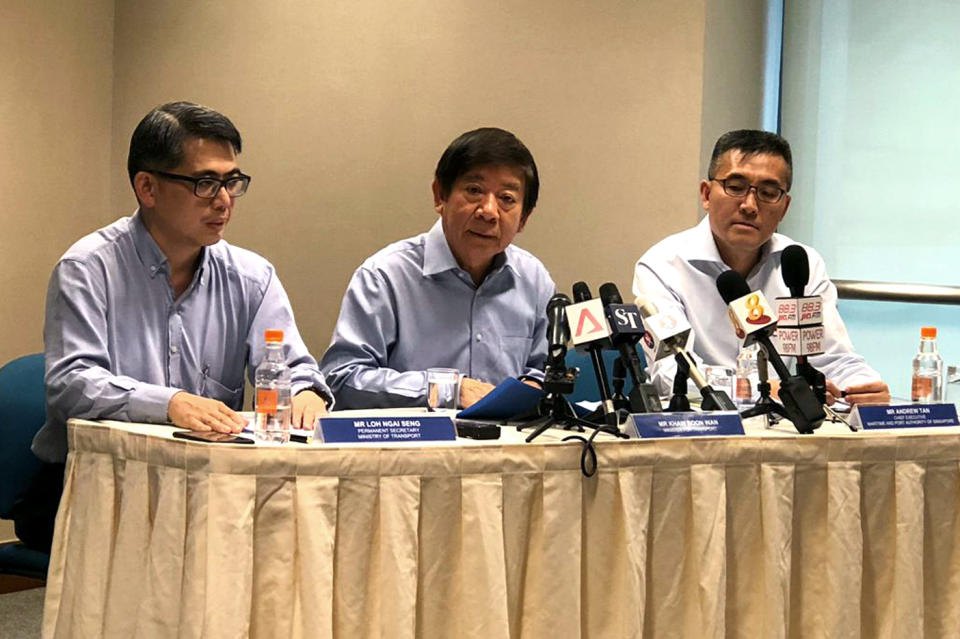COMMENT: Statecraft is the missing piece in Malaysia-Singapore relations

Malaysia can be a minefield of a diplomatic assignment for Singapore officials, especially when a tendentious Prime Minister with oversized emotional baggage works out of Putrajaya. Mahathir Mohamad is one such personality, whose style of governance during his previous 22-year reign took ties between the two disjointed twins to a new low. Now that he is back in the saddle, Singapore is facing yet another tense time as a new fissure is played out over port limits and flight paths.
Some predictable – and all-too-familiar – analyses have emerged. The ultra-nationalists in Malaysia don’t like the garang adek (Malay for fierce younger brother) that left to achieve phenomenal economic success which Malaysia could only dream of. According to them, Singapore is a Chinese-majority country that gives the minority Malays a raw deal. There were also commentaries that said Mahathir was using the latest air-sea dog fight to rattle Singapore’s new political leadership that will take over after the next election.
What is sorely missing in this narrative is whether the Republic’s closeness to the previous Barisan Nasional administration and the deals that were struck between former Malaysian PM Najib Razak and Singapore’s Lee Hsien Loong contributed to the recent spat. Both were dealmakers who shook hands on agreements to build a High Speed Rail (HSR) between KL and Jurong East and unpick the contentious Malaysian railway land in Singapore, something Mahathir was dead set against when he was PM. He felt the HSR was too expensive and that his country was shortchanged.
Perhaps the cosiness between Najib and Lee blinded Singapore to the possibility, however remote, of a change of government up north and of the old foe Mahathir returning to power and looking far more sprightly, passionate and lucid than a 93-year-old should. I was told by reliable sources that the Singapore establishment was taken aback by the 9 May election result and is now paying the price of having to deal with an angst-ridden Mahathir, who has made a return with guns blazing against Singapore. The question: Did Singapore diplomats read the public mood in Malaysia wrongly, especially as the murmurs about the 1MDB scandal were gaining momentum?
Taking on the old warhorse

Singapore did act quickly after Mahathir’s victory in the election. In an effort to show the country’s support, Lee became the first leader to visit Mahathir. But that was like running after the horse after it had bolted. Unfortunately, the visit was marked more by its brevity (30 minutes) and for the awkward body language of the two leaders. In the negotiations to break the deadlock on the postponement/cancellation of the HSR project, Singapore offered very generous terms, including a concession on the compensation. Did Singapore miscalculate that its generous offer would make Mahathir a happy man, and so he wouldn’t revive his old hostility to his southern neighbour?
Finally, an examination of the timelines given by both sides shows that something does not quite add up. Singapore’s Transport Ministry maintains that it notified its Malaysian counterpart and Firefly in 2014 that the turbo-propelled budget carrier would have to take off from and land at the subsidiary airport of Seletar. The Malaysian airline agreed to this and was then formally notified in July 2018 that the move would take place on 1 December.
But on 22 November, Firefly decided to suspend its flights to and from Singapore, as it could not obtain approval from Malaysian authorities for the move. 11 days later, Malaysian Transport Minister Anthony Loke declared his country’s objections to Singapore’s publication of the Instrument Landing System (ILS) procedures for Seletar Airport – even though authorities here say that they notified Malaysia of the ILS in December 2017. In the transition to the present Pakatan Harapan (PH) administration, were the Firefly and ILS matters somehow overlooked? Or did the new government decide to make it an issue?
The best news coming out of this spat is that both sides have decided to sit down and talk. Knowing that Singapore is typically clear and clinical in its approach to possible sticky situations, there is no doubt that it would have a sound case if the matter were to go to international arbitration. But good bilateral relations are not only determined in court. They also have to be embedded in sharp statecraft skills in diplomacy, especially when it comes to dealing with a wily old man.
Related stories
COMMENT: Mahathir the wily player and his Singapore playthings
COMMENT: Is Mahathir a changed man?
Malaysia is using ‘technical excuse’ of ILS to trigger ‘unfriendly act’: Khaw



